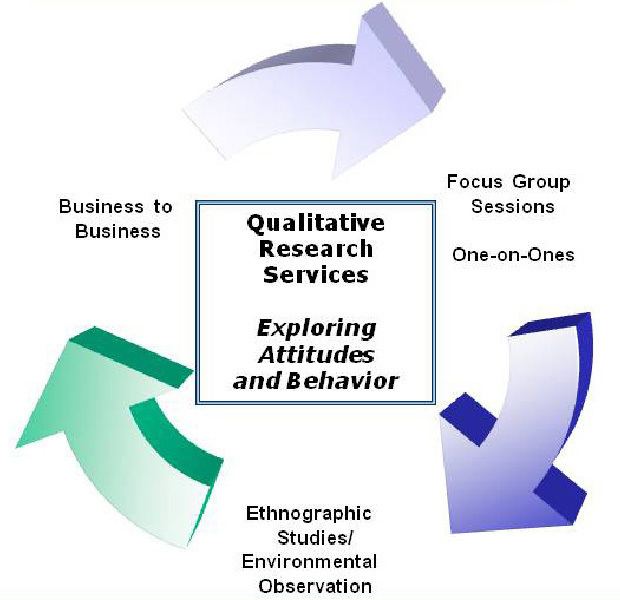 | ||
Qualitative marketing research involves a natural or observational examination of the philosophies that govern consumer behavior. The direction and framework of the research is often revised as new information is gained, allowing the researcher to evaluate issues and subjects in an in-depth manner. The quality of the research produced is heavily dependent on the skills of the researcher and is easily influenced by researcher bias.
Contents
Data collection
Qualitative marketing researchers collect data ranging from focus group, case study, participation observation, innovation game and individual depth interview.
Focus group
The focus group is marketing research technique for qualitative data that involves a small group of people (6-10) that share a common set characteristics (demographics, attitudes, etc.) and participate in a discussion of predetermined topics led by a moderator. There are opportunities to conduct focus groups with the use of focus group software. There are many types of focus group as well, but they always involve discussion among the group(s). The problem of the focus group is the issue of observer dependency: the results obtained are influenced by the researcher or his own reading of the group's discussion, raising questions of validity.
Qualitative case study
Qualitative case study methodology provides tools for researchers to study complex phenomena within their contexts. Because it only studies one case, so it is very up-close, in-depth. It contains high levels of internal validity (the extent to which one is able to say that no other variables except the one being studied caused the result), but the external validity is low. Customer behaviour is a good example for qualitative market research.
Participation observation
Participation observation is watching participants' behavior in real world settings without trying to manipulate their actions. This method is high in external validity but low in internal validity.
Innovation game
Innovation game refers to a form of primary market research developed by Luke Hohmann where customers play a set of directed games as a means of generating feedback about a product or service. A facilitator explains the game(s) to be played and controls the paces, monitors the participants' levels and manages the time. There are many types of innovation games, such as 20/20 vision, me and my shadow, and buy a feature.
Individual depth interviews
By doing individual depth interviews, one can get unique points from each respondent, and their answers will not be influenced by other people as in a focus group.
Uses
Qualitative market research is often part of survey methodology, including telephone surveys and consumer satisfaction surveys. We apply the qualitative market research when:
Typical general procedure
- setting the question
- deciding the objectives
- planning research design
- select data collection techniques
- sample design
- data collection
- analysis
- do the report
Advantages
Disadvantages
Objective
Qualitative research is usually aimed to have an inside look about opinions or motivations, while quantitative research uses data to simplify the result.
Sample
Qualitative research usually has a smaller sample size than quantitative research due to the complexity of its data.
Data collection
Qualitative research usually uses unstructured or semi-structured techniques to collect data, e.g. individual depth interviews or group discussions, while quantitative research only uses structured techniques such as online questionnaires, on-street or telephone interviews.
Outcome
The outcomes of qualitative marketing research are usually conclusive and cannot be used to make generalizations about the population of interest, instead developing an initial understanding and sound base for further decision making. The findings of quantitative marketing research are conclusive and usually descriptive in nature.
Coding
Coding is an interpretive technique that both organizes the data and provides a means to introduce the interpretations of it into certain quantitative methods.
